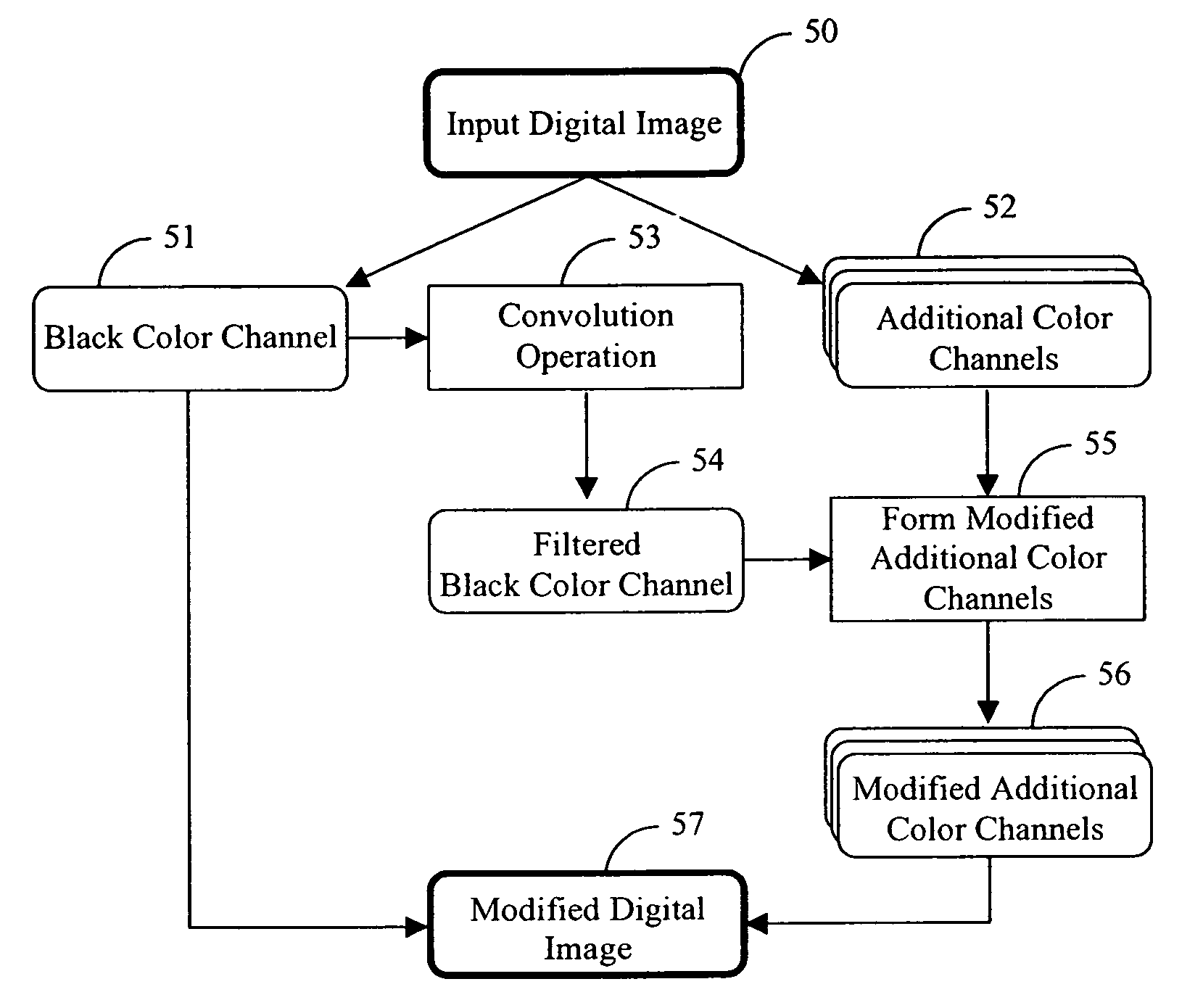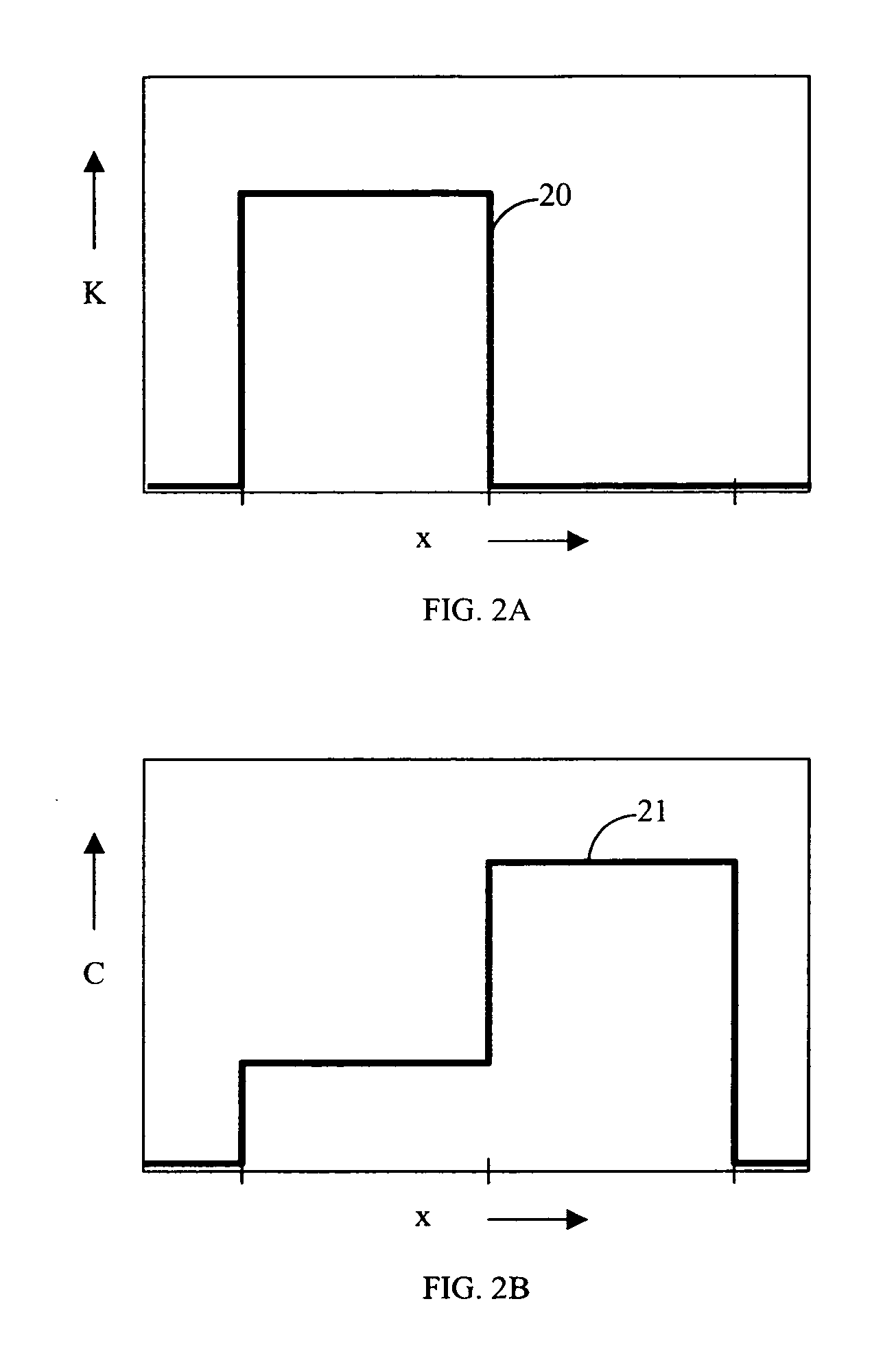Reducing ink bleed artifacts
a technology of ink bleed and artifacts, applied in the field of inkjet printing systems, can solve the problems of common occurrence of ink bleed, ink bleed, ink bleed, etc., and achieve the effects of avoiding the appearance of halo artifacts, computationally simple and efficient, and reducing objectionable bleed artifacts
- Summary
- Abstract
- Description
- Claims
- Application Information
AI Technical Summary
Benefits of technology
Problems solved by technology
Method used
Image
Examples
Embodiment Construction
[0051] The present invention will now be described with reference to the flow diagram given in FIG. 5. An input digital image 50 is comprised of a black color channel 51 corresponding to a black colorant, and one or more additional color channels 52 corresponding to additional colorants. In ink jet printers, such colorants are referred to as inks. The black color channel 51 is processed using a convolution operation 53 to form a filtered black color channel 54. A form modified additional color channels step 55 is then used to modify one or more of the additional color channels 52 in response to the filtered black color channel 54 to form a set of modified additional color channels 56. The original black color channel 51, together with the modified additional color channels 56 comprise a modified digital image 57, the modified digital image 57 being suitable for producing a printed image having reduced ink bleed artifacts on an inkjet printer.
[0052] The method of the present inventi...
PUM
 Login to View More
Login to View More Abstract
Description
Claims
Application Information
 Login to View More
Login to View More - R&D
- Intellectual Property
- Life Sciences
- Materials
- Tech Scout
- Unparalleled Data Quality
- Higher Quality Content
- 60% Fewer Hallucinations
Browse by: Latest US Patents, China's latest patents, Technical Efficacy Thesaurus, Application Domain, Technology Topic, Popular Technical Reports.
© 2025 PatSnap. All rights reserved.Legal|Privacy policy|Modern Slavery Act Transparency Statement|Sitemap|About US| Contact US: help@patsnap.com



